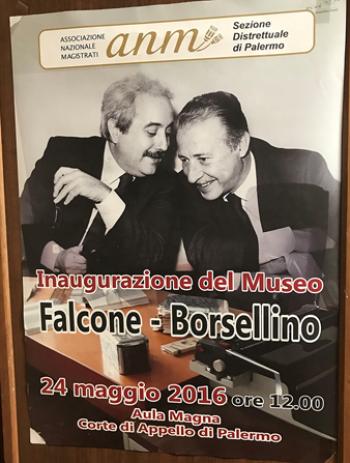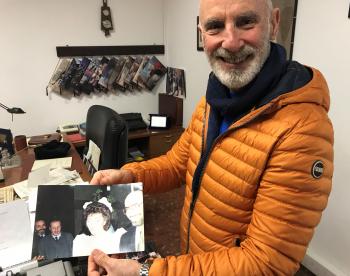Museo Falcone-Borsellino in Palermo
This item appears on page 20 of the November 2020 issue.
I was obsessed by the Second Mafia War in Palermo, Italy, during the 1980s and early ’90s. This was the era of the “Maxi Trial,” when brave judge-prosecutors pursued the Mafia relentlessly. There were many bombings. I followed the news closely, and I mourned when Giovanni Falcone’s entourage was blown up and when his fellow judge-prosecutor and friend, Paolo Borsellino, was assassinated two months later.
After those assassinations, the citizens of Palermo rose up, filled the streets and said “Enough!” It was an exciting time.
I had read books about the Second Mafia War, and a few years ago, MHz Networks aired two films: “Giovanni Falcone” and “Paolo Borsellino — The 57 Days” (the number of days Borsellino lived past Falcone’s assassination). My obsession was reborn.
Seeing Sicily had been on our radar for years (Norman cathedrals and Greek and Roman monuments), so my husband and I joined a guided tour in May 2019. The tour group wasn’t spending much time in Palermo, so we added a few days there before the tour began.
In my research, I learned about the Museo Falcone-Borsellino (Palazzo di Giustizia), which had been established in 2016 inside the Palace of Justice in Palermo. To me, it felt like a pilgrimage. I had to go!
The museum is housed in the judges’ former offices (known as the “bunkerino”), which were moved from the first floor. The docents are surviving police officers who were part of the judges’ team. The visit is free, but you must make a reservation on their website and state your reason for visiting.
Reservation in hand, we made our way to the Palace of Justice, a Brutalist building with concrete barriers outside (no doubt to prevent car bombings). After passing through security, inside it was pretty quiet, and the offices were very sedate. We waited at the museum at our appointed time, but when our docent asked if a group of high schoolers could go ahead of us, we said “Certo” (“Of course”).
We had a private tour with our docent. He didn’t speak much English, and I spoke and understood a little Italian, so the tour was conducted in Italian. Since I was familiar with the history and timeline, I was able to understand and translate a little for my husband. Our docent had been a police officer on the team and was now retired. However, he had been injured in one of the bombings.
He took us through the offices. The outside door was heavily reinforced, and there were security cameras to see who was outside the door. We also saw the archive and the communications center. The desks were reconstructed to look the same as when they had last been used.
In Falcone’s office, the docent showed us a picture of his own wedding day; both Falcone and Borsellino had attended his wedding. “That was the best day of my life,” he said. He was so proud.
It was a little emotional for me. These were true heroes. We shook hands on leaving. I’ll never forget our special afternoon in Palermo.
Among other related sites in the Palermo area is the airport, Falcone Borsellino Airport. On your way into the city, ask your driver to point out the monument to Falcone at the town of Capaci, where Mafia assassins planted high explosives to blow up his car. Falcone’s wife also died in that explosion. And there is an iconic photo of the two friends painted on the side of a building near the waterfront.
I recommend the movie “The Mafia Kills Only in Summer” (available for streaming on Kanopy, which is available to members of some libraries). This black comedy was so popular that the writer-director turned it into a series, accessible on MHz Networks (a paid streaming service).
MEGAN PURSELL
Seattle, WA


